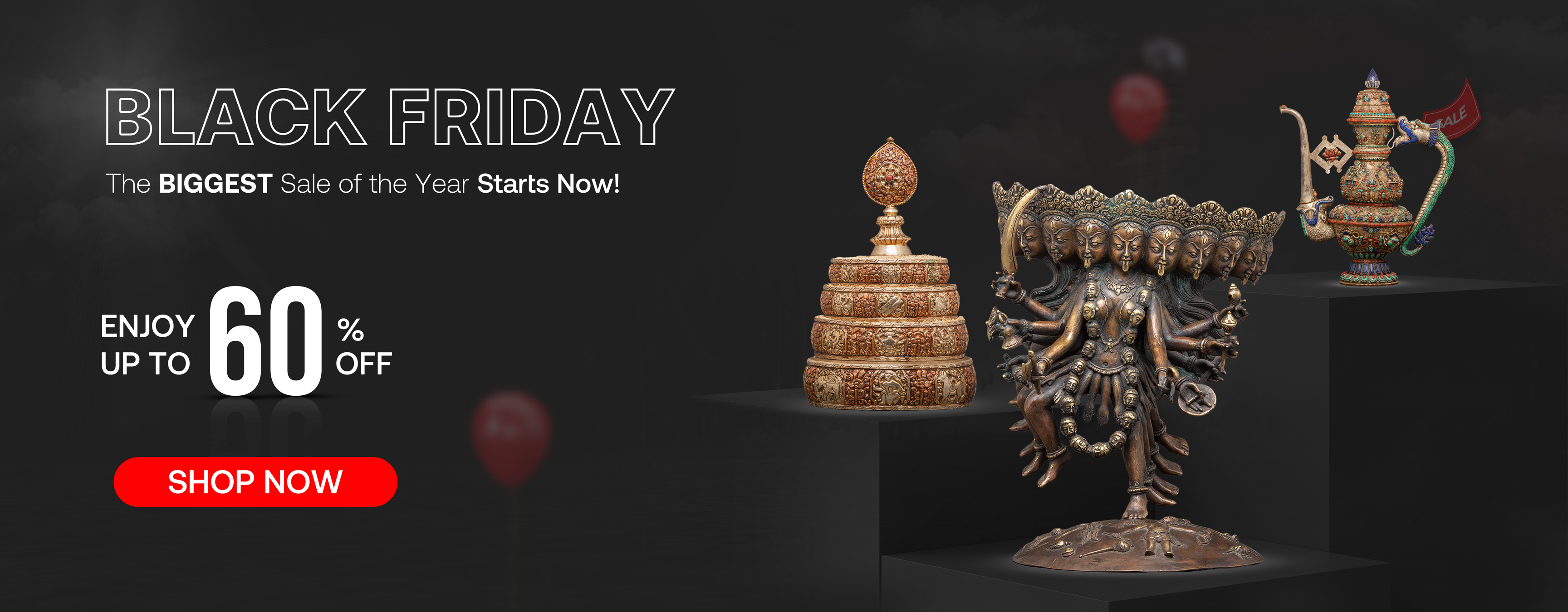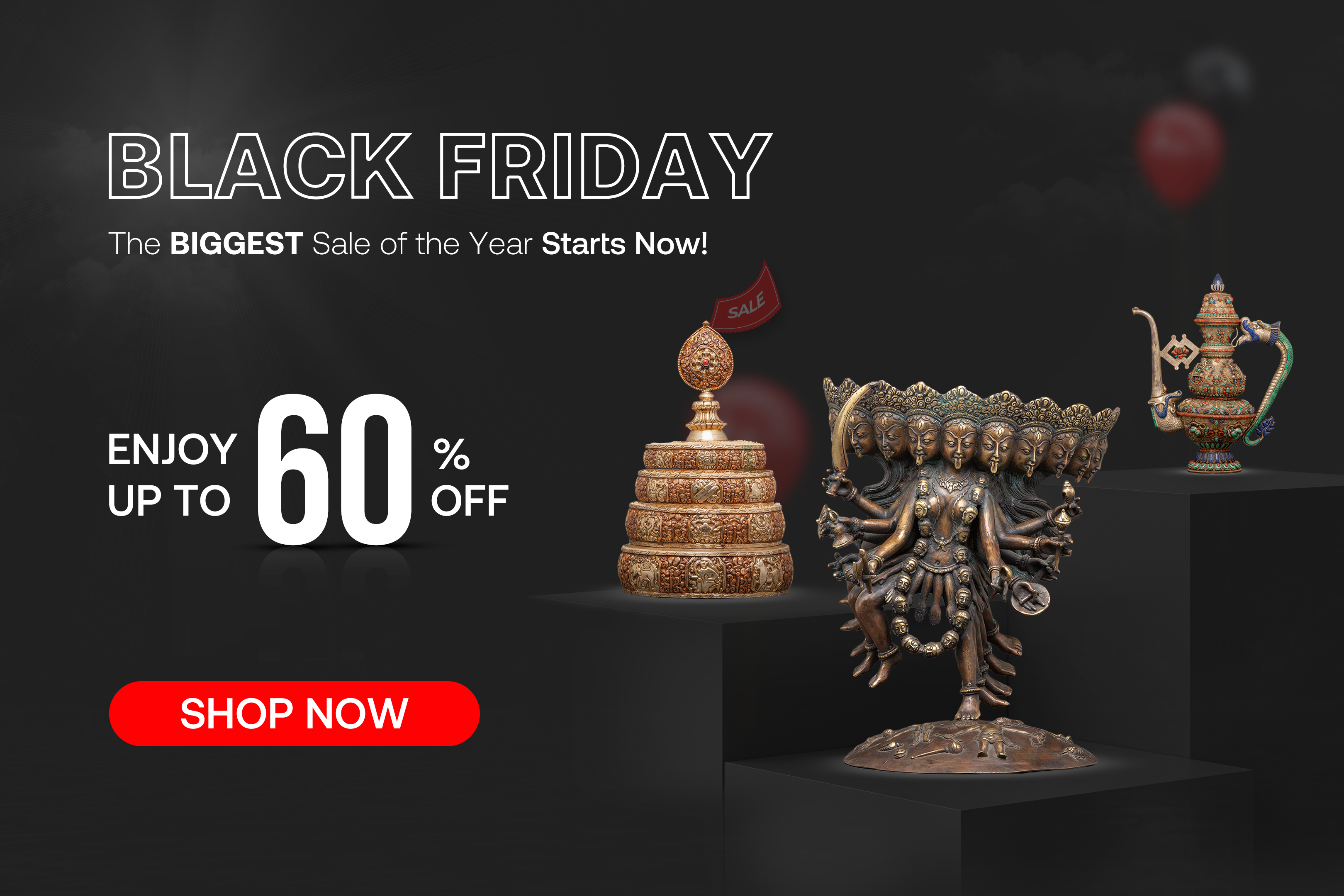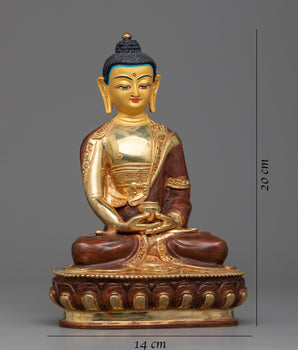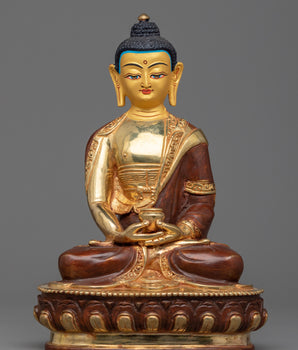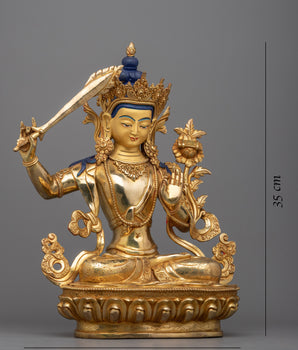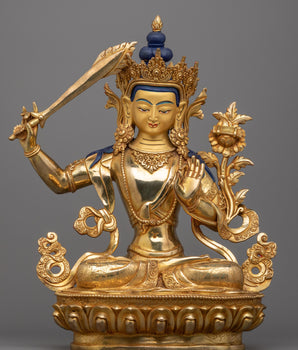The Vajracharya Crown is one of the most iconic and sacred ritual objects in Newar Buddhism of Nepal. Known locally as vajracharya mukut, this headdress is worn exclusively by Vajracharya priests—hereditary tantric specialists of the Kathmandu Valley. Gilded, jewel-studded, and crowned with a vajra finial, it is far more than decoration: it is a living mandala, transforming its wearer into an embodiment of the Buddha himself.
But the Vajracharya Crown also tells a broader Himalayan story—linking Nepal and Tibet, priest and lama, ritual and artistry.

Click to view the details of this Vajra Crown
What is the Vajracharya Crown?
The Vajracharya Crown is a ritual headdress worn by Newar Buddhist priests (Vajracharyas) during initiations, consecrations, and major festivals. Just as the vajra (thunderbolt scepter) and ghanta (bell) symbolize indestructible wisdom and compassion, the crown transforms the priest into a living manifestation of Vairochana, the cosmic Buddha at the center of the mandala.
Composition: A Masterpiece of Newar Metalwork
The crowns are typically made of copper repoussé—a delicate art of hammering sheets of copper into embossed patterns. Artisans then gild the crown in gold and set it with turquoise, coral, and crystal.

Key Features of the Crown:
-
Multi-tiered structure: Layers represent cosmic realms, narrowing upward like Mount Meru.
-
Five Buddhas: Images or medallions of Vairochana, Aksobhya, Ratnasambhava, Amitabha, and Amoghasiddhi are placed around the crown.
-
Vajra finial: A thunderbolt symbolizing cosmic power crowns the top.
-
Ornamental motifs: Lotus petals, scrolling vines, kirtimukha (protective monster faces), and goddesses holding garlands.

Every crown is unique, yet all maintain these symbolic elements that transform a headpiece into a three-dimensional mandala.
Symbolism of Crown: Wearing the Cosmos
When a Vajracharya dons the crown, he is no longer simply a priest—he becomes the axis of the mandala.
-
The Five Buddhas: Each Buddha corresponds to a direction and transforms one human delusion (anger, pride, desire, jealousy, ignorance) into enlightened wisdom.

View our Five Buddha Mandala Thangka
-
The Vajra finial: Represents Vairochana, the Buddha of the Center, embodying the cosmic axis (axis mundi).
-
The Lotus motifs: Signify purity, arising unsullied from the mud of human existence.
Thus, the crown is both ritual regalia and a cosmic map, enabling the priest to enact divine presence during ceremonies.
Stories of the Vajracharya Crown
1. The Boy Who Became a Priest
In Newar culture, boys born into Vajracharya families undergo a ritual called Acharya Abhisheka. During the ceremony, he wears the crown for the first time—symbolizing his transformation into a vessel of divine wisdom. Families recount how shy boys, once crowned, suddenly project an aura of authority, as if the crown itself awakens the latent priest within.
2. The Hidden Crown of Patan
During times of war and political unrest, Vajracharya families would sometimes bury their crowns to protect them from theft or destruction. Oral legends in Patan tell of a crown hidden under temple floors during invasions—later retrieved and restored, becoming a symbol of resilience and continuity.
3. Nepalese Priests in Tibet
From the 13th century onward, Vajracharyas were invited to Tibet to perform tantric rituals. Tibetan chronicles describe how Newar priests arrived wearing golden crowns, dazzling Tibetan audiences. The crown became a symbol of legitimacy, showing that the Vajracharya carried unbroken lineages of tantric empowerment from India into Nepal—and then onward to Tibet.
The Vajracharya Crown and Tibetan Buddhism
The Vajracharya Crown also highlights a cultural dialogue between Newar and Tibetan Buddhism.
-
Shared Deities: Both traditions venerate the Five Buddhas, reflected in Tibetan mandalas and Nepali crowns alike.
-
Cross-Cultural Exchange: Newar artisans traveled to Tibet, crafting crowns, statues, and stupas that still stand today in monasteries across Lhasa and Shigatse.
-
Ritual Influence: Tibetan lamas adopted elements of Vajracharya ritual regalia—sometimes even using crowns during high tantric empowerments, a practice inspired by Nepalese traditions.
This exchange ensured that the Vajracharya Crown became not just a local object, but a pan-Himalayan symbol of tantric authority.
Historical Evolution
-
12th Century: The earliest dated crowns, like one inscribed 1145 CE, were simpler but already bore the Five Buddhas.
-
Malla Period (12th–18th Century): Crowns became taller, more ornate, and richly gilded, reflecting the golden age of Newar art.

Photo Credit to: Metmuseum (link Here)
-
19th Century: Inscriptions show continuity of the tradition, with crowns crafted for temples and families alike.
Conclusion:
Vajracharya Crown is more than a gilded artifact—it is a ritual mandala, an heirloom of priestly authority, and a cultural bridge between Nepal and Tibet. From its copper repoussé artistry to its cosmic symbolism, from initiation ceremonies in Kathmandu to ritual exchanges in Lhasa, the crown continues to shine as a beacon of tantric continuity in the Himalayas.






